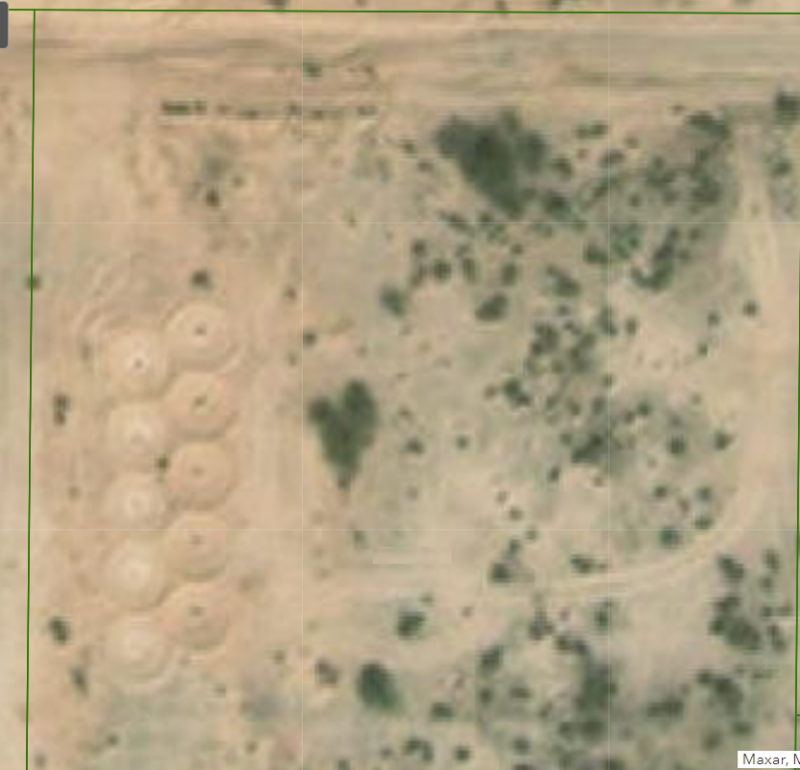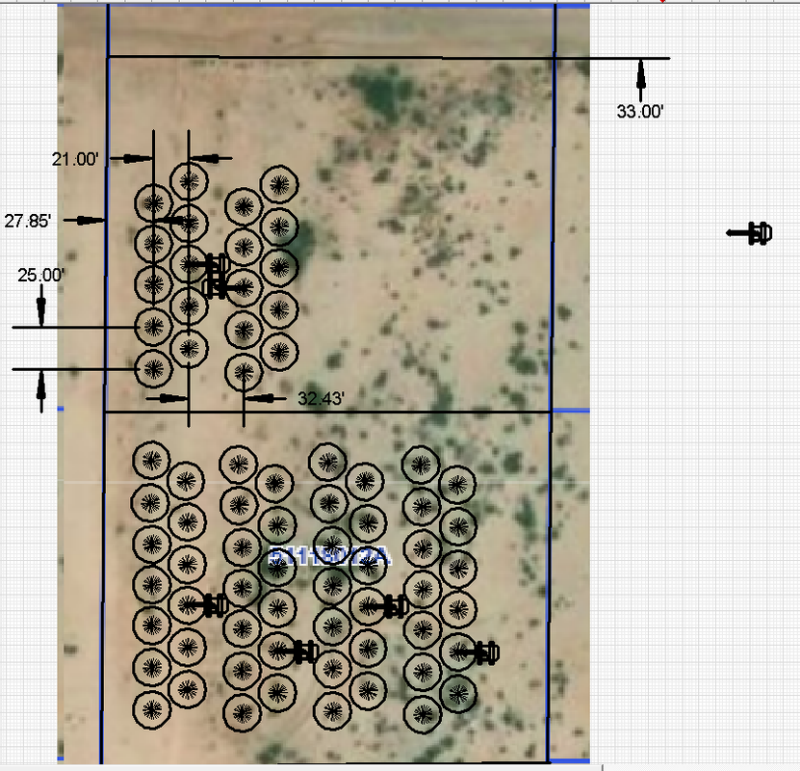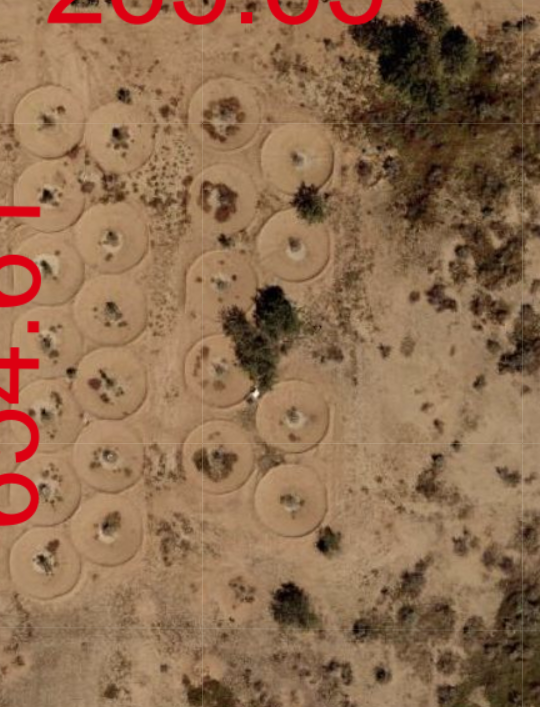




Tyler Ludens wrote:Thank you for sharing so much detail about your experience, especially the failure of the waterboxxes.
I live in a much wetter region than you do but I've killed loads of planted trees by not being able to irrigate them enough. My current plan is to plant tree seeds in fenced enclosures and let them come up (or not) on their own with no irrigation at all. Tree seeds are cheap compared to saplings, so I am planting them very densely and at the same time seeding with legumes and wildflowers. Have you considered planting tree seeds in these lenses? I think it could be quite successful.
Once you get some tough support trees going, you could try more high value trees. I suggest Moringa as a support tree if it stays warm enough to not kill them in the winter. They are perennial here (zone 8b) but die back to the ground each winter. Super easy to grow from seed but need to be planted during warm weather.
 4
4








Mikhail Mulbasicov wrote:UPDATE: DEC.10, 2021
Its been about 3-1/2 months since an appreciable rainfall event. Maybe one little trace sprinkle in that time.
The last week or so, we've managed 3 small rainstorms (0.2, 0.1, 0.2 inches).
Things are still going well. Getting cold now, hopefully the Moringa doesn't die.
Some desert plants popped: Globe Mallow, Desert Senna, and maybe a Fairy Duster.
This was from the desert re-veg mix I has sowed into center section of the Lenzes.....
Maybe more stuff will pop up in spring, but if the hard monsoon rains didn't stimulate germination in the summer,
I doubt much will pop up going forward....
A rogue Loofa grew (from one of my wife's projects) in the mulch I acquired from the house... lolz.
Video and Ramblings here:
I have had no time to construct more WaterLenzes .... I really need to get on that.
 1
1




Mikhail Mulbasicov wrote:UPDATE: DEC.10, 2021
Its been about 3-1/2 months since an appreciable rainfall event. Maybe one little trace sprinkle in that time (Oct. I believe).
The last week or so, we've managed 3 small rainstorms (0.2, 0.1, 0.2 inches).
Things are still going well. Getting cold now, hopefully the Moringa doesn't die.
Some desert plants popped: Globe Mallow, Desert Senna, and maybe a Fairy Duster.
This was from the desert re-veg mix I has sowed into center section of the Lenzes.....
Maybe more stuff will pop up in spring, but if the hard monsoon rains didn't stimulate germination in the summer,
I doubt much will pop up going forward....
A rogue Loofa grew (from one of my wife's projects) in the mulch I acquired from the house... lolz.
Video and Ramblings here:
I have had no time to construct more WaterLenzes .... I really need to get on that.




 3
3




shauna carr wrote:
Stone mulch works much better to keep the moisture in the ground without absorbing any, but obviously doesn't add nutrients, and a build up of debris based mulch on top of it will start to cause problems like any other thick mulch will. Also, for new plants, rock mulch makes it harder on them as it tends to raise the ambient temperature and fries the plants (I have killed SO many plants, ouch).
But...that leads me to some of the positive mulch concepts that have worked for me.
For new plants, a thinner layer of organic mulch has done pretty well - didn't absorb too much water, and was thin enough that it broke down a bit faster.
And while rock mulch was too much for the plants, strategically places stones did well. A stone or two near any plants, underneath where the stones are somewhat shaded and so not going to absorb as much heat from the sun and fry the plants, have been very helpful. The ground stays wet underneath them, they don't fry the plant, and when it's a few stones, but not a sold mulch of rocks, then some debris builds up between the stones naturally and you get a little organic nutrient adding mulch and a little water preserving stone mulch, and it does pretty well. When my perennials grow larger, I may add more stones to the shaded areas, and keep things going like that.
I got the stone idea from an acquaintance who was working on a project in NM, trying to recreate some gardens they'd seen in ancient Anasazi ruins. They speculated that if gardens were planted, and then after sprouting had stones placed in between all the sprouts to keep water loss to a minimum, it would cut down on hugely on water needs. It worked great there, but it was done in a canyon, where there was a lot of shade, and here in the sonoran desert, it doesn't work as well without more protection from the sun.
I’m a permaculture novice and I really appreciate this community!
jenniekies.weebly.com
 1
1




jer ander wrote:There's alot of that is growing on my lot
 3
3





 you tell me?
you tell me?





 5
5




jer ander wrote:Everything is looking great. I really need to get some moringa started. Have you supplied water for them in between rains
 3
3





 2
2




How Permies works: https://permies.com/wiki/34193/permies-works-links-threads
My projects on Skye: The tree field, Growing and landracing, perennial polycultures, "Don't dream it - be it! "
 3
3




 3
3









 1
1




jer ander wrote:Nice. I was about throw away some pvc too. Ill try that








David N Black wrote:I love this project; it couldn't have any higher overlap with my permie interests. I believe that a huge swath of our ecological problems are downstream of the simple (yet difficult) problem of establishing pioneer tree species where it is dry. Your lens idea seems great and I appreciate all the updates you are sharing.
Have you come across this paper?
https://www.researchgate.net/publication/233542652_Biomass_Production_of_Prosopis_species_Mesquite_Leucaena_and_Other_Leguminous_Trees_Grown_Under_HeatDrought_Stress
These trials were done in Brawley in 1979-1980 and they took pretty good notes. A couple points that interested me:
- Total water supplied to the trees was ~30% of potential evaporation in the area, using a deep soak method similar to what your lenses provide
- Prosopis velutina performed quite poorly compared to many of the other mesquite species gathered from around the world, particularly Prosopis alba
- Wild variation in performance between seeds harvested from an individual ancestor
- Parkinsonia aculeata did pretty damn well for only having a single data point, and it looks like yours are doing well too
- How the hell did they get such large trees so quickly?
I keep trying out Moringa each year on the dry California coast and I keep being disappointed. The plant itself seems to have so much promise, but I am not yet convinced they can do well in truly dry climates. "Tropical - drought tolerant" means something very different than "Sonoran Desert tolerant", haha.
For what it's worth though, here is a family growing Moringa in Fresno, maybe they have come across a tougher cultivar or know some tricks?
https://www.kqed.org/news/11644126/small-farmers-in-fresno-hope-for-big-moringa-payoff
Lastly, the southwest has had it pretty rough, rainfall-wise, the last few years. The success you are having is exceptional when keeping that in mind.
Cheers,
David
 2
2





 2
2





 2
2













 1
1





|
Normally trees don't drive trucks. Does this tiny ad have a license?
The new kickstarter is now live!
https://www.kickstarter.com/projects/paulwheaton/garden-cards
|








